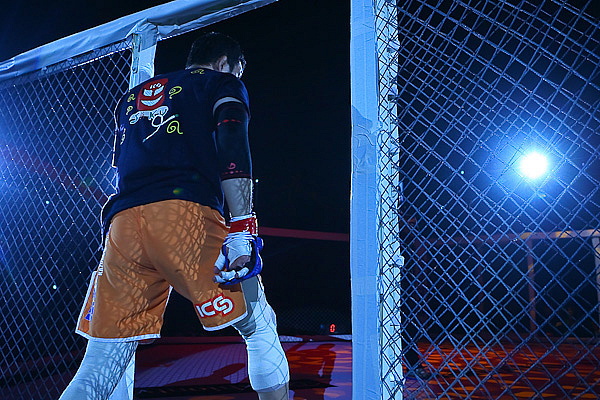A Long, Slow Bleed: Sakuraba, Liddell and the Business of Fading Fighters
Jake Rossen May 12, 2010

File Photo: Sherdog.com
There is an enormous amount of knowledge to be found inside the heads of fighters like Kazushi Sakuraba and Chuck Liddell.
Advertisement
Eventually, neurologists will be able to autopsy a number of brains taken from deceased mixed martial artists and evaluate the damage done by spending a life immersed in loosely-organized violence. Already, the hints are not encouraging: football players, boxers and pro wrestlers whose brains have been studied post-mortem have physical deformities in line with Alzheimer’s patients. While MMA has virtually no mortality rate to speak of, this does not mean its participants are necessarily going to enjoy their old age -- particularly when fighting remains a constant in their lives well past any reasonable cutoff.
In that department -- and others -- Liddell and Sakuraba have
obvious similarities. Both men were perceived as the top-lining
star of their respective companies; both men spent a period of time
where their skills were so far elevated above the competition that
they appeared capable of sustaining that status; both were beaten
into new roles as aging attractions. Neither man appears ready or
willing to enter a new phase of life, even as they each turn 41
before the end of the year.
Liddell has been knocked out in three of his last five fights. Thanks to his headhunting style, he has undoubtedly absorbed significant punishment even in winning efforts. On the current season of “The Ultimate Fighter,” his speech runs loose. Words become coagulated and his tongue slips in unintended directions. Because he is persistent, he will fight again June 12. Because he is famous, no one will tell him no.
Sakuraba has been even less fortunate. It’s impossible to say whether he’s cognitively ill, but because no athletic commission exists in Japan to establish even a loose structure for his safety, he has spent significant time in the ring at risk. At a body weight that could see him cut to 170 pounds, he has fought Mirko "Cro Cop" Filipovic, Wanderlei Silva, Igor Vovchanchyn and Ricardo Arona. (Imagine Dustin Hazelett fighting Junior dos Santos and you have some idea of Sakuraba’s career as one extended suicide run.) Like Liddell, he will fight again soon.
Opportunities for both men exist because there are no clear criteria in place here or abroad for the care and handling of the persistent prizefighter. Whose responsibility are they? And should anyone feel obligated to deny the livelihood of a consenting adult?
The athletic commissions have only vague notions of how to audit worn licensees. Aging fighters are often asked to submit to additional neurological testing, which may be indicative of immediate duress but have little application for the cumulative effect of the damage years down the road. (Today’s NFL players are often tomorrow’s vegetables.) Evander Holyfield, a man who speaks as though he just stumbled out of the tumble-dry cycle, was recently granted a license to fight in Nevada a full seven years after that same commission had all but declared him finished; Liddell will probably be licensed; a 47-year-old Herschel Walker passed a battery of tests and got his permission. Fighters are rarely denied except in the cases of poor behavior or obvious and current irregularities. No one looks at the big picture.
If that first line of defense fails, and it often does, the responsibility might fall on the promoter to be humane. (“Promoter” and “humane” are not exactly ham and eggs.) There are traces of Dana White considering this tact for Liddell: for his former champion, White drew a third fight with Tito Ortiz, a man Liddell beat twice before and someone highly incapable of finding anyone’s chin. It’s at least equitable in a way that feeding Liddell to Mauricio Rua or Rashad Evans was not.
Dream, Sakuraba’s employer, went one better by offering a 2-0 Ralek Gracie -- nephew of Royce -- to continue that family’s “rivalry.” Ralek is young and athletic, but not a fighter who uses concussive punishment as a weapon. Sakuraba will, at worst, get a torn ligament or two in a scramble. It’s an exciting fight that isn’t polluted by concerns over Sakuraba’s health. (Watch his fight with Melvin Manhoef, a man with caffeine in his blood, and see how quickly your stomach comes up in your throat.) While it seems pleasant to consider that a promoter will handle and match ailing fighters accordingly, we shouldn’t forget that we are asking a promoter to look out for the best interests of the athletes. You don’t ask the wolf to babysit.
Personal responsibility is something to be respected. Coal miners, firefighters, and high-rise workers aren’t pulled away from their jobs because someone believes it’s too dangerous for them -- though some would say those jobs are necessary while prizefighting isn’t. Does that mean we decide to assign levels of importance to someone’s interests? That being a cop is a noble enough pursuit to risk your life, but a boxing match isn’t?
There is no satisfactory answer. Sakuraba and Liddell will continue to compete, sometimes outside their current level of ability. Because the UFC is result-oriented, Liddell will probably be shelved before Sakuraba, who continues to attract interest based on his personality. But the sport is too young to really understand the consequences of letting stubborn athletes stay on their feet: the steady percussion of damage doesn’t promise a late-stage quality of life. Its closest cousin, boxing, spits out near-invalids. On a recent documentary about fighters who faced Muhammad Ali, several needed subtitles to be understood. The producers obliged them.
Referees are congratulated when they intervene on behalf of a fighter, even when he complains he could have kept going. If we accept they’re too tough for their own good at that moment, why aren’t we applying that same logic to the rest of their life?
Related Articles






